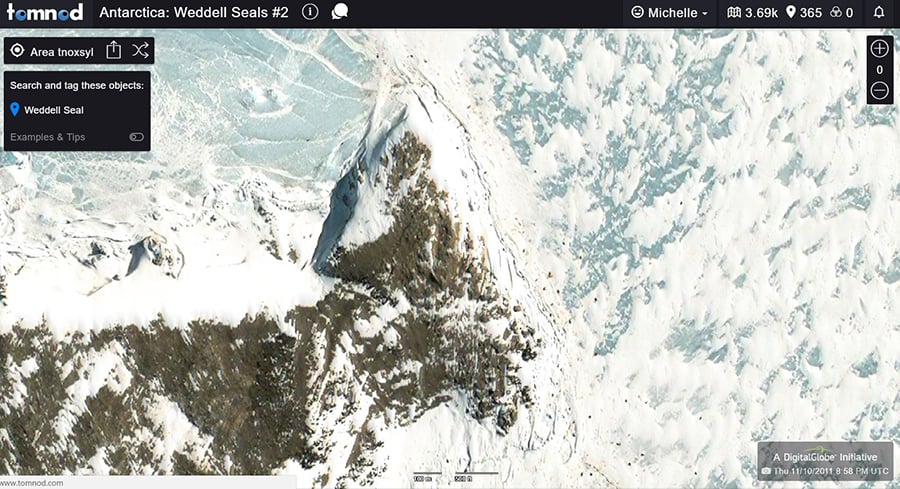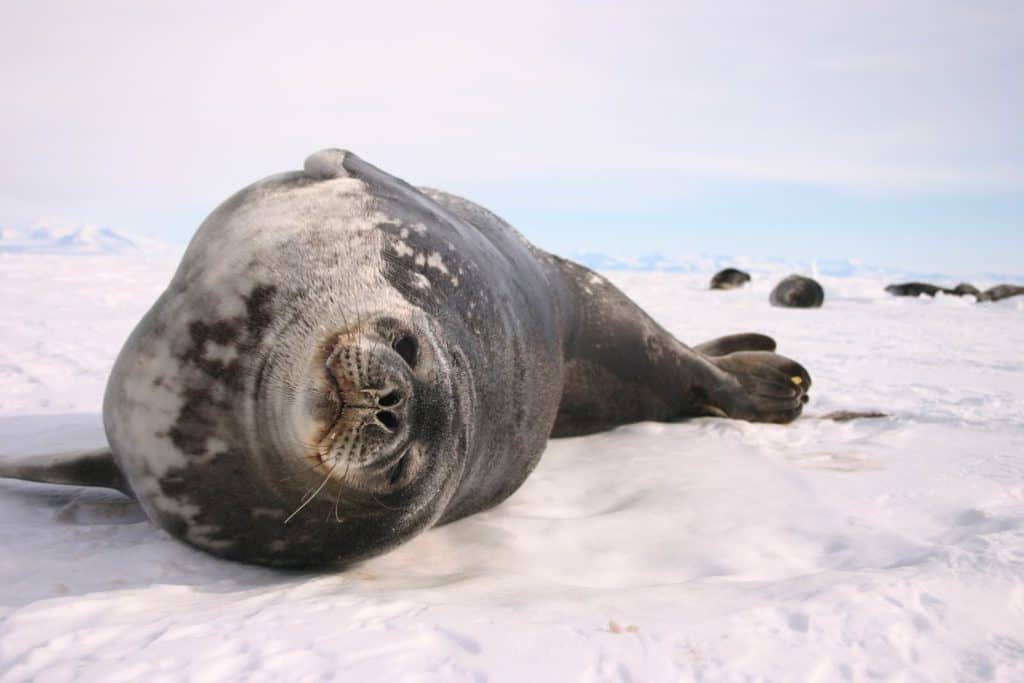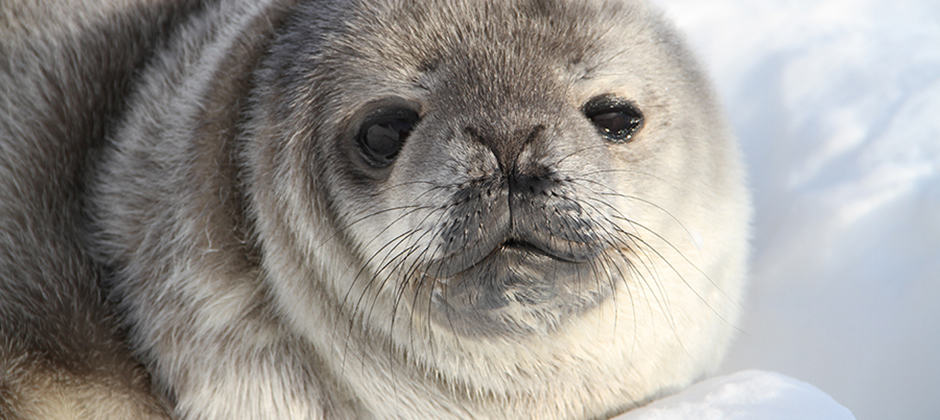Share this article
Counting seals from space
Volunteer scientists have helped researchers obtain a baseline count of Weddell seals in Antarctica using satellite images. The number of seals they counted is just a fraction of previous estimates, but researchers say the difference may mean better data, not fewer seals.
The team estimated there are about 202,000 sub-adult and adult females on the continent. Previous estimates put the number at about 800,000.
“We’re not necessarily suggesting it’s a decrease,” said Michelle LaRue, a research associate at the University of Minnesota and an associate professor at the University of Canterbury in New Zealand. “The way we gathered data and counted was different and not comparable to past counts.”
LaRue and her colleagues conducted a proof of concept study in 2011 showing that satellite data could be used to count seals in the remote, harsh conditions of Antarctica. “If you put little black pieces of rice on the table and took the negative of that picture, that’s what seals look like in satellite data,” she said.
But scaling up the research and counting seals in such an expansive area required more eyes on the project. LaRue led a study published recently in Science Advances in which she and her colleagues turned to volunteers to help count those rice-like blips in the images. “It was something that hadn’t been done before,” she said.

Volunteers looked at high-resolution satellite images from space to help count Weddell seals in Antarctica. Credit: DigitaGlobe/Maxar Technologies
LaRue and her colleagues turned to GeoHive Hub, a crowdsourcing platform where volunteers could help analyze data. The creators of the project had a large email list LaRue and her team tapped into to find volunteers. They also wrote press releases and social media posts to obtain volunteers.
Volunteers were excited with the work, LaRue said. Some discovered planes flying over the ice and even emperor penguins (Aptenodytes forsteri), which appeared as smaller specs on the maps. “That exploration and feeling of discovery is really special,” she said. “And Antarctica is a place where a lot of people don’t want to go or will never go.”
Volunteers were only able to count female seals during the time of the study in November because males were mostly under the ice guarding their territories. After analyzing the data, the team found there were about 202,000 female seals.
This number is much smaller than estimates from decades previously. But those efforts counted Weddell seals (Leptonychotes weddellii) from ships or from helicopters, platforms incapable of accessing most of the fast ice where the seals live.
This new method provides a baseline seal count that researchers can follow up on in the future. “We have the ability to know where to go to search for them in the future and how to go about doing this,” LaRue said. “We have the capacity to do this every year if we want to be able to calculate trends.”

There are about 202,000 sub-adult and adult females in Antarctica, researchers estimate. Credit: Michelle LaRue, University of Minnesota Photo taken with zoom lens under National Marine Fisheries Service Permit #87-1851-04”
The data also uncovered other findings. For example, the seals tended to be along the coastline on fast ice—ice fastened to the coastline. They also tended to be closer to emperor penguin colonies, as long as the colonies weren’t too large. “Both emperor penguins and seals need fast ice habitat,” she said. When there are too many penguins, they may not stay as close to them, as they may compete for food. But they may be coexisting with smaller colonies and taking advantage of resources during different seasons, she said.
Gaining more information on Weddell seals can aid conservation efforts, such as the effects of industrial fishing on one of the seals’ food sources—Antarctic toothfish, which shows up as Chilean seabass on menus at fancy restaurants.
“Knowledge about what seal populations are doing over time could help us determine whether or not there’s overfishing in the system,” she said.
Header Image: Volunteers helped researchers get a baseline estimate of how many female Weddell seals are in Antarctica. Credit: Michelle LaRue, University of Minnesota Photo taken with zoom lens under National Marine Fisheries Service Permit #87-1851-04”








